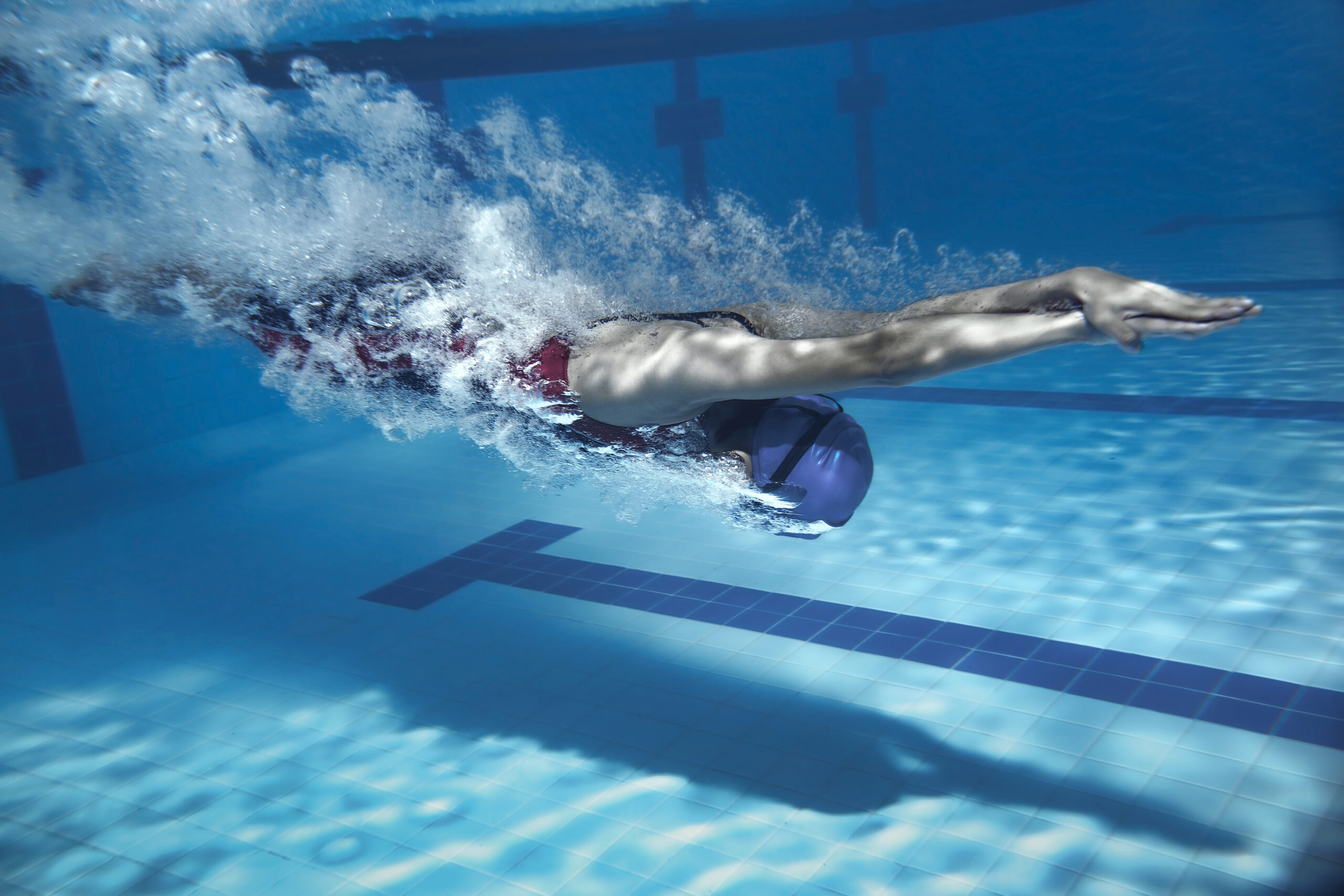Designing a natatorium is a highly complex task. From architectural aesthetics to technical specifications, creating a natatorium that is functional, visually appealing, and safe for users requires careful planning and attention to detail.
There’s no one-size-fits-all process that can guide every natatorium project. There are, however, a few issues that every indoor pool facility will need to eventually address. We’ve assembled a short list here as a very basic starting point. If you’re looking for a more comprehensive breakdown, check out our in-depth Natatorium Design Guide.
The Basics of Natatorium Design
Creating a functional space
Designing the layout of your indoor pool facility is about more than just appealing spaces for visitors. There are numerous regulations to bear in mind related to accessibility and overall safety.
Remember that natatoriums demand a great deal of space dedicated to behind-the-scenes functions. Filtration, humidity control, ventilation, and other key systems need to be considered early in the process.
Where will these systems be placed? Does the layout offer suitable space for installation and ongoing maintenance? Answering these questions early can spare you significant headaches and surprise costs down the road.
Managing humidity
Maintaining the right humidity level is crucial in a natatorium. High humidity can lead to discomfort, structural damage, and health issues. There are strict guidelines to help guide natatorium engineers in maintaining comfortable humidity levels.
Invest in high-quality dehumidification systems specifically designed for indoor pool environments. These systems are designed to remove excess moisture from the air, maintaining the humidity at a comfortable level. An expert dehumidification partner will be able to assess your facility and find the best system to suit your needs.
You’ll also need to implement a robust ventilation system that continuously brings in fresh outdoor air and exhausts the humid indoor air. Proper ventilation helps in controlling humidity and ensures a steady supply of oxygen for swimmers.
Maintaining good air quality
Indoor pools are prone to poor air quality due to the presence of chlorine fumes, chemical vapors, and other pollutants. With the right systems in place, you can anticipate and address this issue. This is critical to the process, as many of these chemicals can negatively affect visitor’s health and safety.
Chloramines, formed by the reaction of chlorine with organic substances, can cause respiratory problems. Use ultraviolet (UV) or ozone-based systems to break down chloramines, ensuring a healthier environment.
The American Society of Heating, Refrigerating, and Air Conditioning Engineers (ASHRAE) recommends a 4-6 volumetric air changes per hour in a natatorium (6-8 for stadiums with audiences present). Your air circulation system needs to be able to keep up with that level of airflow to keep the environment safe and comfortable.
Controlling condensation
Condensation can damage building materials and affect overall air quality. There are a few ways to address this issue as part of your natatorium’s design.
First, properly insulate the natatorium to maintain consistent indoor temperatures. Insulated walls and ceilings help prevent temperature differences that can lead to condensation on surfaces.
Using the right materials for ventilation ductwork can also make an impact. Stainless steel, for example, is weakened by chlorine, so its best to avoid using it to build your ventilation system. Galvanized steel and fabric ducts are both good choices for condensation control.
There are many aesthetic and architectural choices that can also affect condensation control. For example, large skylights casting sunlight on your pool may look nice but keeping skylights clear of condensation requires substantial airflow. This doesn’t mean that you can’t use skylights, just that they need to be accounted for in the design.
From a technical standpoint, this is just the most basic summary of what designing a natatorium demands. Designing a natatorium requires a holistic approach that addresses all these factors and others.
By investing in high-quality systems, indoor pool facilities can offer a pleasant and safe experience for swimmers and visitors alike. Regular maintenance and monitoring play a vital role in sustaining the effectiveness of these measures, ensuring the longevity and efficiency of the natatorium.
For more detailed information, check out our Natatorium Design Guide.
Need help with your natatorium design? Contact our experts today!
